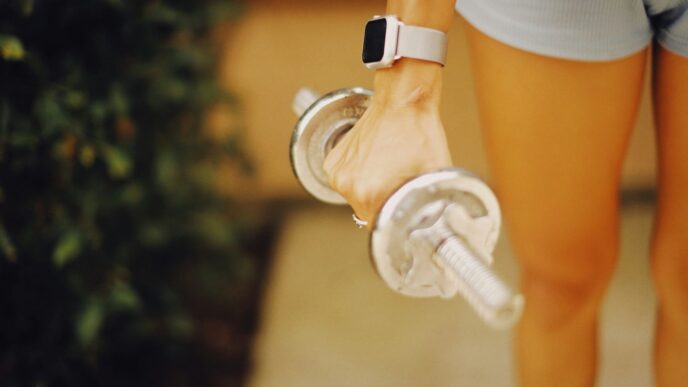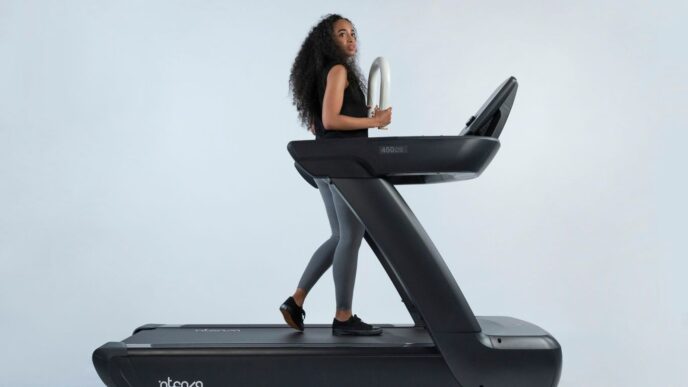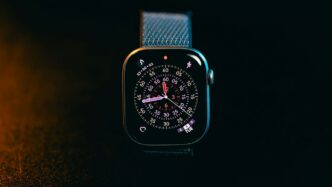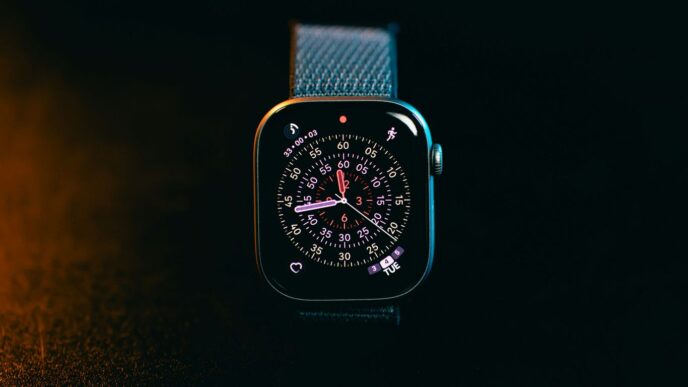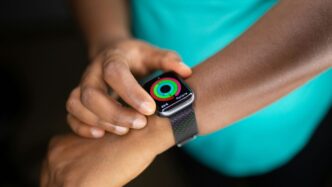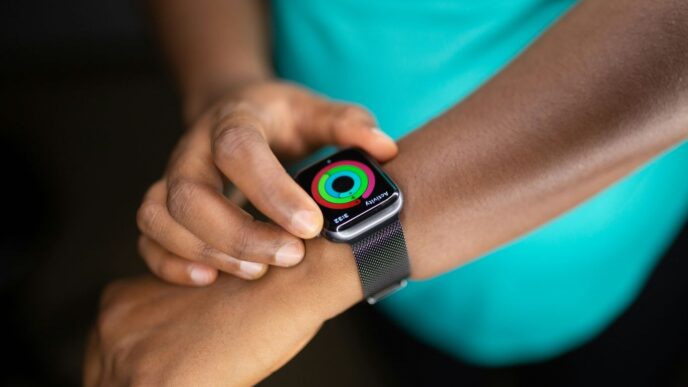So, you’ve got a Fitbit and you’re wondering how to really get the most out of it? It’s more than just a step counter, you know. The Fitbit app is where all the magic happens, turning all those little beeps and buzzes into actual information about your health. We’re going to walk through how to get it set up, figure out what all those numbers mean, and make it work for you. It’s not as complicated as it might seem at first glance.
Key Takeaways
- Setting up your Fitbit device and connecting it to the fitbit app is the first step to tracking your health.
- The fitbit app shows you your daily activity, like steps and distance, and helps you understand your workouts better.
- Pay attention to sleep tracking in the fitbit app to learn about your rest patterns.
- Use the fitbit app to check health details like heart rate and stress levels.
- You can change how your fitbit looks and set personal goals within the fitbit app.
Getting Started With Your Fitbit App
So, you’ve got a new Fitbit and you’re ready to start tracking your health. That’s great! The first step is getting everything set up with the Fitbit app on your phone. It’s not too complicated, honestly.
Seamless Device Pairing and Setup
First things first, you’ll need to download the Fitbit app from your phone’s app store. Once it’s installed, open it up and create an account or log in if you already have one. The app will then guide you through pairing your Fitbit device. Make sure your phone’s Bluetooth is turned on. You’ll usually need to hold down a button on your Fitbit until it shows a pairing code or a vibration. Follow the prompts in the app, which might involve entering a code displayed on your Fitbit screen. It’s important to let your Fitbit charge for a bit before you start this process, maybe an hour or so, just to make sure it has enough power.
Navigating Your Fitbit Dashboard
Once your Fitbit is paired, you’ll see your main dashboard in the app. Think of this as your central hub. It shows you a snapshot of your daily activity, like steps taken, calories burned, and distance covered. You can scroll through different tiles or sections to see more details. Each tile usually represents a different metric, such as your sleep quality from the night before or your heart rate. You can customize which tiles appear on your dashboard and in what order, which really helps you see the information that matters most to you at a glance.
Understanding Key Health Metrics
Fitbit tracks a bunch of things, but let’s focus on the basics to start. You’ll see metrics like:
- Steps: This is pretty straightforward – how many steps you’ve taken throughout the day.
- Calories Burned: An estimate of how many calories your body has used, based on your activity and personal stats.
- Active Minutes: These are minutes spent doing activities that get your heart pumping. It’s a good way to see if you’re meeting general fitness recommendations.
- Sleep Score: This gives you a breakdown of your sleep quality, looking at things like how long you slept, how much time you spent in different sleep stages, and how restless you were. It’s a number out of 100, so a higher score means better sleep.
Don’t worry about understanding every single number right away. Just focus on getting familiar with these main ones as you start using your Fitbit.
Mastering Fitness Tracking Features
Fitbit does more than just count your steps; it’s designed to give you a clearer picture of your entire fitness routine. Whether you’re a seasoned athlete or just starting out, understanding these features can really make a difference in how you approach your workouts and daily activity.
Optimizing Workout Tracking
Fitbit makes it pretty straightforward to log your exercises. You can manually select from a long list of activities, from running and cycling to swimming and yoga. The key is to pick the right one so your Fitbit can gather the most accurate data for that specific type of movement. For instance, tracking a run will focus on pace and distance, while a yoga session might prioritize heart rate and duration. Don’t forget to check your settings to see if your device supports automatic exercise recognition for activities you do frequently. This can save you a few taps when you’re in the zone.
Understanding Heart Rate Zones and Active Minutes
Your heart rate is a big indicator of workout intensity. Fitbit breaks this down into different zones, usually categorized as Fat Burn, Cardio, and Peak. Staying in these zones for longer periods helps you achieve different fitness goals. For example, spending more time in the Cardio zone is great for improving your heart health and stamina.
Fitbit also tracks ‘Active Minutes’. These are minutes spent doing moderately to vigorously intense activities. The goal is usually to hit a certain number of active minutes each week, which is a good way to measure your overall effort beyond just steps. It’s a simple way to see if you’re getting enough of a challenge during your day.
Leveraging Auto-Detection for Exercises
One of the neatest tricks Fitbit has up its sleeve is auto-detection. If you start moving at a brisk pace for a certain amount of time (usually 10-15 minutes), your Fitbit can often recognize it as a workout and start logging it automatically. This is super handy for those spontaneous walks or jogs you might forget to start manually. You can usually adjust the minimum time required for auto-detection in the app settings. It’s a great feature for making sure you don’t miss out on tracking those everyday bursts of activity that contribute to your overall fitness goals.
Deep Dive Into Health Insights

Fitbit goes beyond just counting steps. It offers a closer look at what’s happening inside your body, helping you understand your overall well-being.
Unlocking the Power of Sleep Tracking
Sleep is super important, right? Fitbit’s sleep tracking can show you how well you’re actually sleeping. It breaks down your night into different stages: light, deep, and REM sleep. You can see how long you spent in each stage and how many times you woke up. This information can help you figure out if something is messing with your sleep, like maybe that late-night coffee or a room that’s too warm.
Here’s a look at what Fitbit tracks:
- Sleep Stages: Light, Deep, REM
- Sleep Score: A number from 0-100 showing your sleep quality
- Awake Time: How long you were awake during the night
- Restfulness: How much time you spent actually asleep
Knowing this can help you make small changes to your bedtime routine, like winding down earlier or making your bedroom darker, which might lead to feeling more rested.
Monitoring Stress and Skin Temperature
Fitbit can also give you insights into your body’s stress levels and temperature. Some models track your skin temperature variations overnight. Changes here can sometimes be an early sign of your body reacting to something, like the start of an illness or even your menstrual cycle.
Fitbit also has a stress management score. It looks at your heart rate, sleep, and activity to give you a number that shows how your body is handling stress. If your score is consistently low, it might be a good time to try some relaxation techniques. The app often suggests guided breathing exercises or mindfulness sessions that you can do right from your wrist.
Utilizing ECG and SpO₂ Sensors
Certain Fitbit devices come with more advanced sensors, like an ECG app and SpO₂ monitoring. The ECG app can take an electrocardiogram reading from your wrist. This is used to check for signs of atrial fibrillation (AFib), a type of irregular heart rhythm. It’s not a replacement for a doctor’s visit, but it can provide data to discuss with your healthcare provider.
SpO₂ sensors measure the oxygen saturation in your blood. This is usually done overnight. Tracking your blood oxygen levels can offer clues about your respiratory health and sleep quality. If your levels drop significantly or are consistently low, it’s something worth mentioning to your doctor. These sensors provide a more detailed picture of your physiological state, going beyond basic activity tracking.
Integrating Smart Features into Your Day

Your Fitbit is more than just a step counter; it’s a little helper that can make your daily life smoother. Think of it as a tiny assistant right on your wrist, keeping you connected and in control without always needing to pull out your phone. It’s pretty neat how much it can do.
Managing Notifications and Calls
Ever miss an important call or text because your phone was buried in your bag? Your Fitbit can help with that. You can set it up to buzz on your wrist when you get incoming calls, texts, or calendar alerts. This means you can stay in the loop during meetings or when you’re out and about, without being glued to your screen. You can even customize which apps send you notifications, so you only get alerts for what truly matters to you. It’s a good way to filter out the noise and focus on what’s important.
Controlling Music and Payments
If you’re someone who likes to listen to music while exercising or commuting, your Fitbit can act as a remote control. You can play, pause, skip tracks, and adjust the volume right from your wrist. No more fumbling with your phone mid-run! Plus, depending on your region and bank, many Fitbit devices support Fitbit Pay. This lets you add your credit or debit card and make contactless payments at stores. Just a quick tap of your wrist, and you’re done. It’s super convenient when you’re on the go and don’t want to carry a wallet.
Exploring Google Tools on Your Wrist
Fitbit, now part of Google, is starting to integrate more Google services. Depending on your specific Fitbit model, you might have access to features like Google Assistant or Google Maps. For example, you could ask Google Assistant questions, set reminders, or get directions without needing your phone. This integration is growing, so keep an eye out for new ways your Fitbit can connect with the Google ecosystem to simplify tasks and provide quick information when you need it most.
Personalizing Your Fitbit Experience
Your Fitbit is more than just a gadget that counts steps; it’s a tool that can be shaped to fit your life. Making it truly yours means tweaking it so it works best for you. This is where customizing watch faces, setting personal goals, and adjusting app settings come into play.
Customizing Watch Faces and Layouts
Ever look at your Fitbit and wish it showed something different? You’re in luck. Fitbit offers a bunch of different watch faces, and you can pick one that shows what’s important to you. Some might show the time and your daily steps, while others might focus on your heart rate or the weather. It’s pretty easy to change, too. Usually, you just go into the Fitbit app, find the ‘Clock Faces’ section, and pick a new one. You can even arrange the information on some faces to your liking. It’s a small thing, but seeing what you want right there on your wrist makes a difference.
Setting and Achieving Personal Goals
Fitbit is great for tracking progress, but it’s even better when you set your own targets. Whether you want to walk 10,000 steps a day, get 30 active minutes, or improve your sleep score, you can set these goals in the app. The app will then show you how you’re doing and celebrate when you hit your marks. It’s like having a little cheerleader on your wrist.
Here’s a quick look at common goals you can set:
- Steps: Aim for a daily step count.
- Active Minutes: Target a certain amount of time spent in moderate to vigorous activity.
- Sleep: Set a bedtime and wake-up time to improve sleep consistency.
- Calories Burned: Monitor your daily energy expenditure.
Tailoring App Settings for Your Needs
Beyond the watch face, the Fitbit app itself has settings you can adjust. You can decide which notifications you want to receive on your tracker – maybe you only want calls and texts, or perhaps you want alerts from specific apps. You can also manage privacy settings and how your data is used. Taking a few minutes to go through these settings can make your Fitbit experience much smoother and more relevant to your daily routine. It’s all about making the technology work for you, not the other way around.
Maximizing Fitbit App Functionality
So, you’ve got your Fitbit all set up and you’re tracking your workouts and sleep. That’s great! But there’s a whole lot more you can do with the app to really get the most out of it. It’s not just about seeing numbers; it’s about understanding what they mean and how they can help you live better.
Interpreting Trends and Wellness Reports
This is where the real magic happens. Your Fitbit app collects a ton of data, but just looking at daily stats can be a bit overwhelming. The app helps you see the bigger picture. It shows you how your activity, sleep, and heart rate are changing over time. Looking at these trends can reveal patterns you might not notice otherwise. For example, you might see that your sleep quality dips when you exercise late in the evening, or that your resting heart rate has gone down as you’ve become more active. These reports aren’t just pretty charts; they’re your personal health story, helping you make smarter choices.
Utilizing Fitbit Premium Features
Fitbit offers a premium subscription that unlocks even more insights. If you’re serious about your health, it’s worth considering. Premium gives you access to things like detailed sleep scores, guided programs for fitness and mindfulness, and personalized health reports. It’s like having a personal health coach in your pocket. For instance, the daily readiness score can tell you if you should push hard in a workout or take it easy, based on your recent activity, sleep, and heart rate variability. It takes the guesswork out of training and recovery.
Troubleshooting Syncing and Update Issues
Sometimes, technology can be a bit finicky, and your Fitbit might not sync properly or an update might cause problems. Don’t panic! Most of the time, these issues are pretty easy to fix. Here are a few common steps:
- Restart your Fitbit device: Just like restarting your phone, this can often clear up minor glitches.
- Check your Bluetooth connection: Make sure Bluetooth is on for both your phone and your Fitbit, and try unpairing and re-pairing the device in your phone’s Bluetooth settings.
- Update the Fitbit app: Ensure you have the latest version of the app installed from your phone’s app store. Sometimes, older versions can cause syncing problems.
- Restart your phone: A simple phone restart can also resolve connectivity issues.
If you’re still having trouble, the Fitbit help section within the app or on their website has detailed guides and support options. They’re usually pretty good at helping you get back on track.
Keep Moving Forward
So there you have it. Your Fitbit is more than just a gadget that counts steps; it’s a tool that can really help you get a better handle on your health. From tracking your workouts and sleep to keeping tabs on your heart rate, the app gives you a clear picture of what’s going on. Don’t be afraid to play around with all the different features. The more you use it, the more you’ll learn about yourself and how to make healthier choices. Keep exploring, keep moving, and keep working towards your personal best.
Frequently Asked Questions
How do I connect my Fitbit device to my phone?
Getting your Fitbit linked up with your phone is pretty straightforward. First, make sure you have the Fitbit app downloaded from your phone’s app store. Then, open the app and follow the on-screen steps to create an account or sign in. When prompted, turn on your phone’s Bluetooth and bring your Fitbit device close. The app will guide you through the pairing process, usually by asking you to tap your device or enter a code shown on its screen.
Do I need to pay for Fitbit Premium to use my Fitbit?
Nope, you don’t need Fitbit Premium to get the most out of your tracker! Many of the core features, like tracking your steps, workouts, sleep, and heart rate, work perfectly fine without a subscription. Fitbit Premium offers extra insights and advanced programs, but the essential health tracking is available to everyone.
How accurate is Fitbit’s sleep tracking?
Fitbit devices are generally quite good at tracking sleep. They use your movement and heart rate to figure out if you’re awake, restless, or in different sleep stages like light, deep, and REM sleep. While it’s not a medical-grade sleep study, it gives you a really solid idea of your sleep patterns and quality, helping you see how well you’re resting each night.
Can my Fitbit receive text messages and calls?
Yes, many Fitbit models can show you notifications from your phone right on your wrist! You can set it up in the Fitbit app to get alerts for calls, texts, and even app notifications. This way, you can see who’s trying to reach you without having to pull out your phone, which is super handy during workouts or meetings.
How do I change the watch face on my Fitbit?
Personalizing your Fitbit is easy! Just open the Fitbit app on your phone, go to your device settings, and look for the ‘Clock Faces’ option. You’ll find a bunch of different designs you can choose from. Some let you show off your stats, while others are more minimalist. Just pick the one you like best and sync it to your watch.
What should I do if my Fitbit isn’t syncing with the app?
If your Fitbit is acting up and not syncing, don’t worry! First, check that your phone’s Bluetooth is on and that your Fitbit is charged. Try closing and reopening the Fitbit app, or even restarting your phone and your Fitbit device. Sometimes, simply checking for app updates or device firmware updates in the app can fix syncing problems too.






